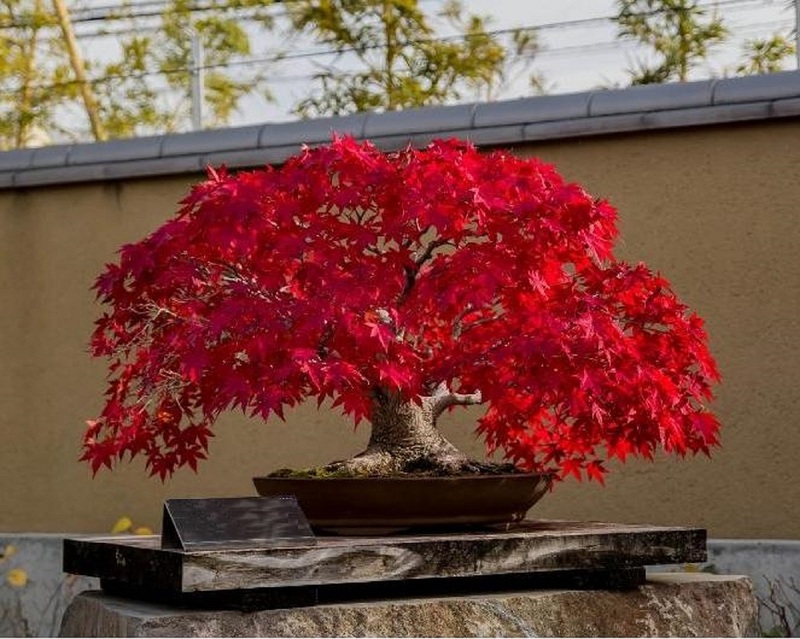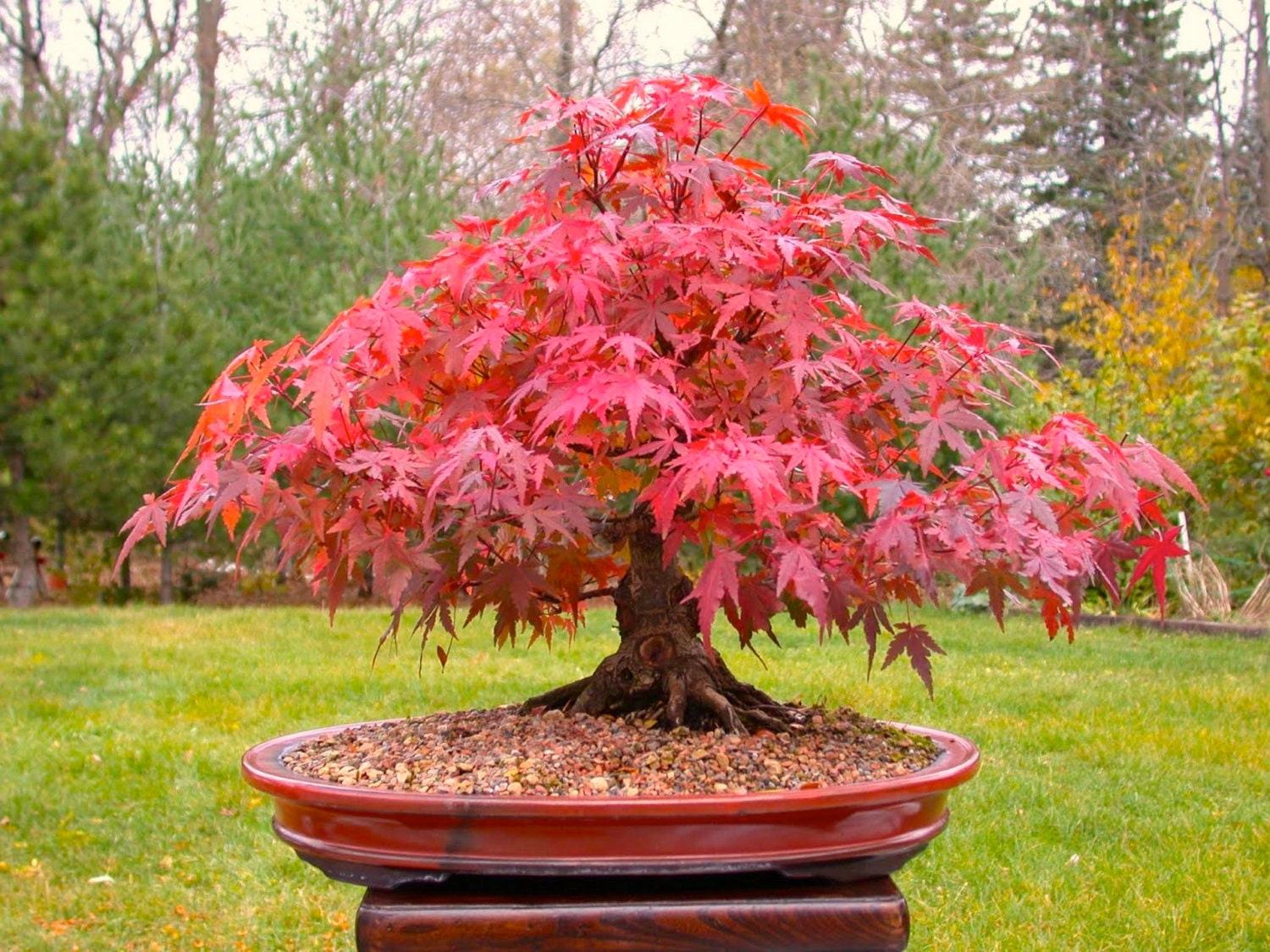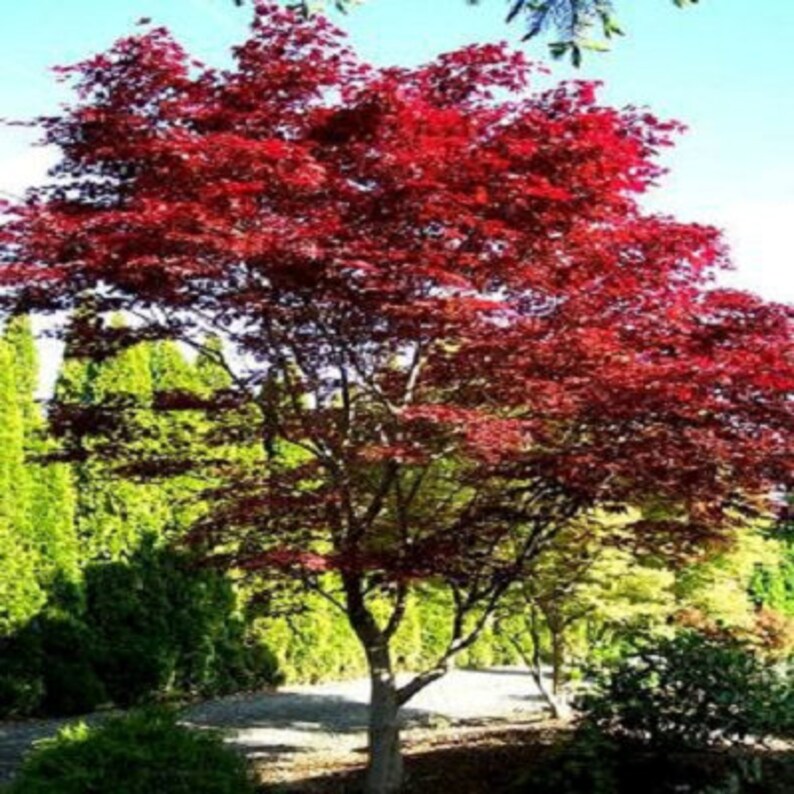

The leaves of maple trees are deciduous, so they lose them during the winter and sprout in the spring. The Japanese Maple Bonsai Trees are known for their distinctive leaf shapes and changes in the seasons. This tree is thought to have grown fine-branching varieties of bonsai in Japan. In autumn, the leaves begin to turn red, and a lovely red is visible. Spring is the ideal time for them to sprout because they are pink in color. Acer palms are indigenous to Japan and Korea.
#Japanese red maple how to
If you want to learn how to use a Japanese maple or Acer palmatum, please let us know. We’ll look at the most common trees to determine which is the most common for you. The leaves of the plant turn bright red as the weather warms.Īcers, also known as maples, are the most coveted trees for bonsai due to their beautiful leaves. The Beni Hime has very small leaves and is a dwarf maple, making it an excellent bonsai plant. The grafting scars on this Japanese maple, Beni Hime Acer palmatum, are extremely low, making it ideal for bonsai. The Japanese Red Maple is a beautiful plant that can be used to make an excellent bonsai specimen. This plant, which has five five-lobed leaves, is appropriately named because it resembles a palm the Latin word for the palm of the hand is palma.

When the weather is hot, it’s okay to water your tree several times if the soil is well-drained and the tree is healthy and vigorous. Water your Japanese Maple bonsai on a daily basis during its growth season.

The tree’s branches are flexible, making it ideal for bonsai training. The colors begin with a green and then change to orange, then orange again and finally red. When a tree reaches maturity, its leaves will turn yellow. Japanese maple trees are a deciduous tree native to Japan. Your tree is miniature, so it will require a little extra attention.Īcer rubrum ( Red Maple) is a very low-maintenance and long-lasting bonsai tree that is an excellent choice for those who are just getting started. Insects, diseases, and other pests can be treated like any other plant by treating them as diseases, insects, and other pests. When the tree is the least fragile, it is preferable to trim it in the summer. You should repot your bonsai on a regular basis, preferably on Japanese maples such as Red Dragon. It should be kept cool or cold (around 3 months) in the winter in order to survive harsh freezes. When deciduous trees are left outside, it is best to not leave them outside for an extended period of time. The Japanese maple bonsai’s most distinguishing feature is its stunning red color, which is both elegant and feathery. It can be difficult to keep red dragon japanese maple small without pruning, but with proper care it can make a beautiful and long-lived bonsai. Red dragon japanese maple is a good choice for bonsai because of its small size, slow growth rate, and attractive foliage. Bonsai is the art of growing miniature trees in containers, using techniques such as pruning and potting to control the tree’s size and shape.

It is a deciduous tree, meaning that it will lose its leaves in fall, and is often grown as a bonsai.
#Japanese red maple full


 0 kommentar(er)
0 kommentar(er)
